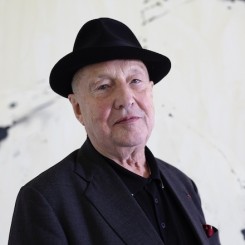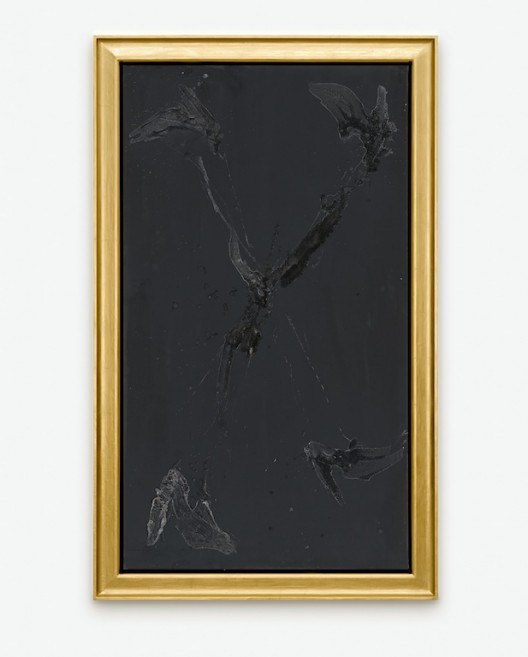An Interview with Georg Baselitz
Georg Baselitz is one of the most influential artists of his generation. Born in 1938 in Sachsen, in what was then Communist East Germany, Baselitz was dismissed from art school after only two semesters for “gesellschaftspolitisch unreif” (“socio-political immaturity”). In 1957 he moved to West Berlin.
Toward the end of 2015, Baselitz had two solo shows, one at Gagosian Gallery in New York and the other at White Cube in Hong Kong. Ran Dian interviewed the artist to discuss his Hong Kong show, his views on the London School of painters, and the state of painting and politics today. His next show will open in April 2016 at White Cube, London.
Chris Moore: Have you ever visited China?
Georg Baselitz: No.
CM: Then we can just talk about art—but that’s the best thing anyway.
GB: Yes, I think so.
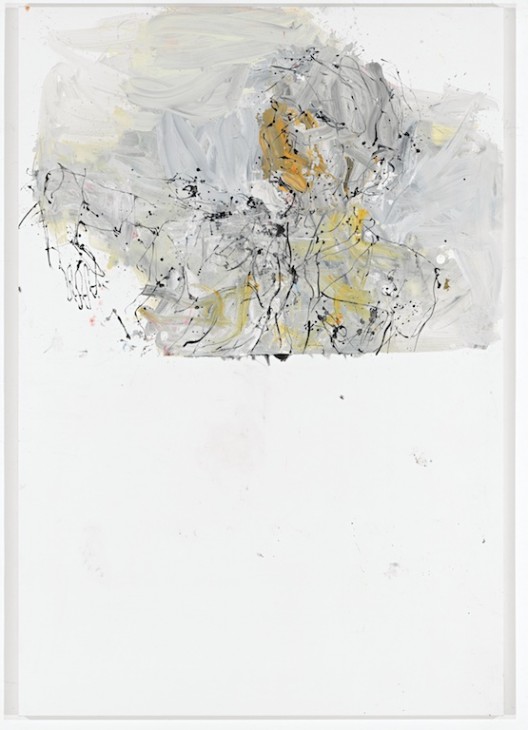
Georg Baselitz, “In London gesucht und nichts gefunden”, oil on canvas, 300 x 205 cm (118 1/8 x 80 11/16 in.), 2011 (© Georg Baselitz. Photo © Jochen Littkemann, Berlin; Courtesy White Cube)
CM: And there’s much to discuss. First I’d like to talk with you about these paintings, “In London Gesucht und Nichts Gefunden” (“I Looked in London but Found Nothing”) and “In London Gewesen und Niemand Getroffen” (“I Was in London but Met No One”).
GB: There’s a German author, W. G. Sebald, who spent a long time in England. He wrote an essay on Frank Auerbach, about immigration and so on. Under these auspices, he visited Auerbach several times.1
I’d seen Auerbach’s paintings, Leon Kossoff’s and Lucian Freud’s, the so-called London School.2 I’ve known about them since about 1960—they weren’t so famous at the time, particularly Freud. But there was something very English about it—not international at all.
I think that the 1960s, the period of art just after the war, was a time when it was important to leave the past behind, and one did this with the help of American art—very beautiful, large, free works. The English art didn’t fit this at all. If you look at David Hockney’s pictures from this period, there is no link. Nor did the German art of this period correspond to this vision at all—if you could say that German art that was independent of American and French art even existed during this period. I mean Art Informel. And this always fascinated me: Is there only one direction that can be called avant-garde? One which storms ahead? Or is there something else? Not outsider art or Besserwisser (Know-it-all) art, but something more complex, more problematic, something that isn’t as free, that isn’t so funny or so consumer-oriented. And I think that, yes, it did exist through these English artists and also through my own practice, from the very beginning until now.
Now! There is an international art market, and this market has become a dominant factor in terms of determining values. If something costs a million, then it must be “worth” something, and now Lucian Freud and Andy Warhol cost many millions, and there is no differentiation in their appraisal—maybe only at the level of the content. One has to say, well, one is Andy Warhol, or Roy Lichtenstein or Jasper Johns, and the other, Auerbach and Freud and so on. Both or many are possible. I’m not merely intellectually driven; every time I am thinking about something, I engage with it and make paintings about it, and this is how these works were made.
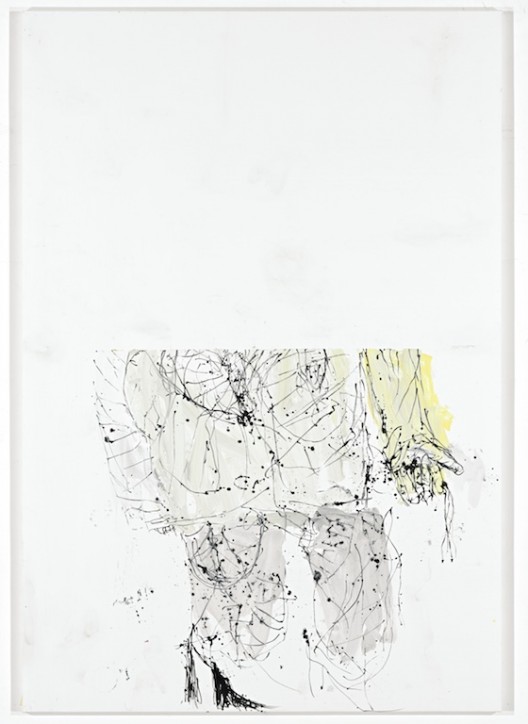
Georg Baselitz, “In London Stück für Stück”, oil on canvas, 300 x 205 cm (118 1/8 x 80 11/16 in.), 2011 (© Georg Baselitz. Photo © Jochen Littkemann, Berlin; Courtesy White Cube)
Georg Baselitz, In London nicht, aber in Aarhus schon, 2011, oil on canvas, 300 x 206 cm (118 x 81 in.), (© Georg Baselitz. Photo © Jochen Littkemann, Berlin; Courtesy White Cube)
CM: I agree totally. The 1960s in England were a pretty boring time in terms of art. Richard Hamilton and Francis Bacon had something, but in comparison to other movements in Europe, such as in Germany, it was very English and very thin.
GB: That’s true. But I wasn’t just interested in art; theater was also quite dominant as an art form, which originated both in France and especially in England—Samuel Beckett, for example. Beckett is very close to the London School, and to what I was doing. You cannot find this link in the American art. There is neither theater, nor, I think, music in American art—not that that makes it worse.
CM: Yes. But then you found a connection between Auerbach and Egon Schiele, and this influenced the poses of the figures in your paintings in the exhibition.
GB: Yes, that’s correct. Early on, I spent a lot of time on the Austrian painters Schiele, Gustav Klimt, and Richard Gerstl, who were associated with the Schönberg circle around the composer Arnold Schönberg—his music interests me greatly. The situation depicted in the paintings is very existential, and also if you compare it to Freud or Auerbach. Funnily enough, I saw the last big Freud retrospective in Vienna, in the Kunsthistorisches Museum, and he was hanging between the Old Masters. It was very unusual and impressive.
You can see that a step was missing in the work of the artists from the London School. It is as if they are frozen in time. It is very compact in its quality, but there is simply a step missing. If you analyze the Freud images in terms of their content, it’s Vienna around the turn of the nineteenth century and not England in the 1970s. It is that strange time before the First World War, which still exists in the minds of Freud and the others. At least that’s the way I see it.
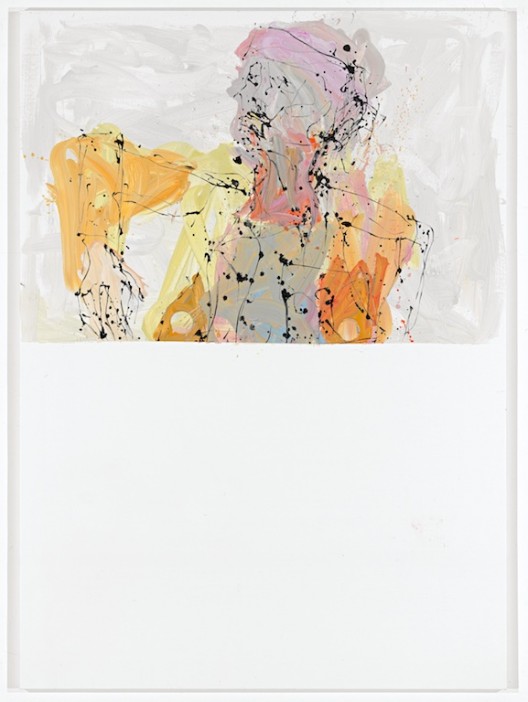
Georg Baselitz, “In London gewesen, niemand getroffen”, oil on canvas, 300 x 215 cm (118 1/8 x 84 5/8 in.), 2011 (© Georg Baselitz. Photo © Jochen Littkemann, Berlin; Courtesy White Cube)
CM: I totally agree, and my father was British and an artist! You have used these figures, in the wider perspective, for decades, for instance this lonely man, who perhaps is a romantic, a soldier, or a refugee, sometimes standing, sometimes on his head. This figure is also in the exhibition.
GB: My figurative repertoire is very narrow, and I’ve never felt like widening it. The figures that resemble Auerbach are based on drawings from 1965, the Heldenzeichnungen and Frakturzeichnungen (lit. “fracture paintings”), and I just used them as bases for over-dimensioned paintings. Of course, these drawings have many references to Viennese paintings, both stylistically and in terms of content—Schiele and Richard Gerstl. At the time, it was my background. When I discovered Gerstl, a friend of Schönberg’s, it was a very interesting piece, a self-portrait as a nude done when he was about twenty-five. It was identical to what I was intending to do. Over the decades I haven’t lost this background, this interest. I haven’t moved on to different worlds. Intellectually speaking, I have remained where I am, but I have perfected things.
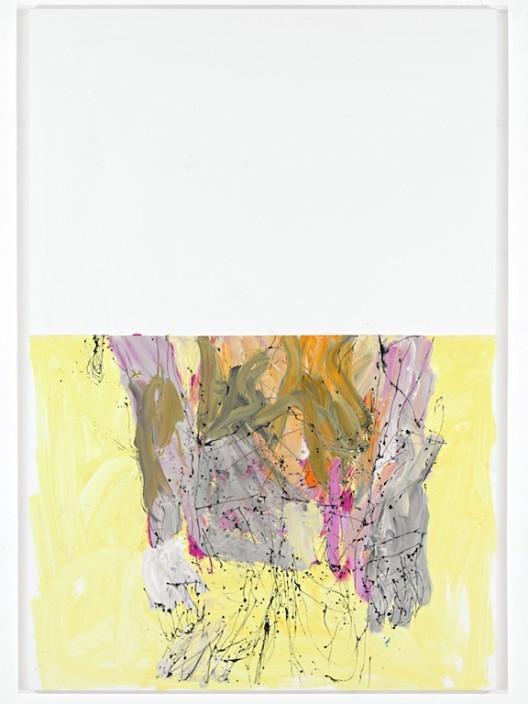
Georg Baselitz, “Winterschlaf”, patinated bronze, 159 x 378.5 x 140 cm (62 5/8 x 149 x 55 1/8 in.), 2014 (© Georg Baselitz. Photo © Jochen Littkemann, Berlin; Courtesy White Cube)
GB: Almost all the titles of the works in the Gagosian show refer to the Sebald essay. There are no hidden meanings. Everything that I say is explicit, perhaps poetically.
CM: The legs in these works are always important. You made a series as both sculpture and painting, and in this exhibition you have a large-scale bronze sculpture, and the mandala painting.
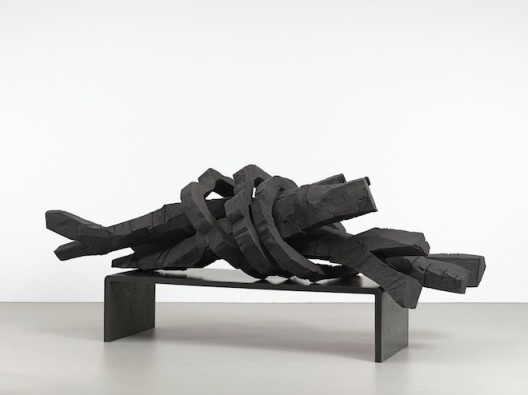
Georg Baselitz, “Winterschlaf”, patinated bronze, 159 x 378.5 x 140 cm (62 5/8 x 149 x 55 1/8 in.), 2014 (© Georg Baselitz. Photo © Jochen Littkemann, Berlin; Courtesy White Cube)
GB: The sculpture is called “Winterschaf ” (“Wintersleep”). It appears as a bundle of tinder-sticks, but it is a single unit. They are bundled and lying on a table. When I first made the work in wood, it reminded me of Joseph Beuys’s sculpture “Schneefall” (“Snowfall”, 1965), which consists of thin birch branches with a felt blanket over them. The second reference is Caspar David Friedrich’s “Das Eismeer” (“The Polar Sea”, 1823–24). Both works are tragic, sentimental. The title “Winterschlaf” refers to the winter hibernation of small mammals—things that are frozen by the cold and simply have to sleep.
CM: How do you see the state of painting today? You have developed and seen much, and now are in a position where you can look back over the last forty years. What is your opinion on painting and its moral and historical connections?
GB: It’s changed completely. When I referred to the avant-garde or Beckett earlier, or to the London School or Pop art, all of these art movements were supported by a doctrine or ideology. But today, it’s very difficult to find this. There are no more ideologies, there is no doctrine. Thirty years ago people were loudly declaring, publicly, that painting was old-fashioned, that it was no longer relevant as a medium. Today it is an entirely different situation: there are many paintings being painted again.
Who would have thought, twenty years ago, that there would be an avant-garde link between Chinese and European art? In China, socialist realism was much more dominant even than in the Soviet Union. It was sealed off hermetically and the avant-garde or the renewal of painting was forbidden. The images were terrible, all like adverts or propaganda. This has changed completely. Today, Asian and Chinese painting is taken very seriously, and it is very good! And it’s the same here: there are many young artists who are doing interesting things that didn’t exist before. This is the change that I have observed, and you can also see it in the ideology. For instance, no one takes Communism seriously as a theory any more, which is a huge change.
CM: Is that positive, or negative, or both?
GB: I see it as positive. I hate doctrines and ideologies. Attempts to introduce better systems are always horrid, in my view, as all of these systems have failed.
CM: I think there are many weak politicians in Europe at the moment who are incapable of taking on a position and defending it. We can see this in the UK, France. . . Do we need something that we can believe in? I’m also a bit concerned, in terms of art, that if everything is permitted, if everything is only decoration, then art is also in danger, and critique and our ways of thinking, too.
GB: I disagree completely! What you’re saying is what people who are very skeptical with regard to the market or even to success say. When you say that politicians are weak, well, during the last dictatorships a man such as Enver Hoxha, the leader of Albania, or Erich Honecker, were ridiculous figures who only followed one line: that of Stalinism. You cannot argue that these dictators were strong; they were merely powerful. They had a huge amount of power and oppressed the population as a result. Now, all these people who have lost hope, these millions who come to Germany: a difficult subject! And I’m not surprised that politicians, who in the end are only managers, are unable to respond to the situation. Frau Merkel is still very much influenced by the East, by Socialism. But if she still had Honecker on her mind—or by the hand!—then not a single refugee would cross the border. But she has become like Mother Teresa, which is ridiculous. I’m also afraid, but it is a situation that exists.
But in art, or in painting, things are much easier. One has to assume that an artist’s existence is always precarious because the uncertainty, even if they are commanding prices in the millions, is a permanent factor. There are only a few that have this success, and those who don’t are wrestling for it. People will try to do anything new if it implies success. Think of Lucio Fontana! If you look at his catalogue raisonné, it contains thousands of his slashed canvases. I am but a kleiner Schüler (young pupil) of his; this is how much I admire him. And of course, you can only take it seriously because it was a huge contribution to art history, at least postwar.
Interview conducted by telephone, November 6, 2015.
Notes
1. In Sebald’s “Die Ausgewanderten. Vier lange Erzählungen” (The Emigrants, 1992), Auerbach appears as Max Aurach (Ferber in the English version).
2. The name “London School,” invented by the British American artist R. B. Kitaj, belies its immigrant background. Auerbach and Freud (a grandson of Sigmund Freud) were born in Germany and moved with their families to the UK to escape Nazism in 1939 and 1933, respectively, while Leon Kossoff was the son of Russian immigrants. These four artists were Jewish, while other members of the group included Francis Bacon and David Hockney.



